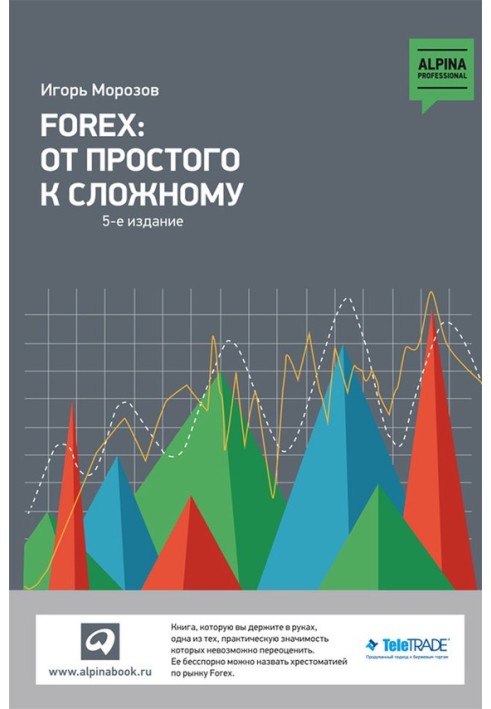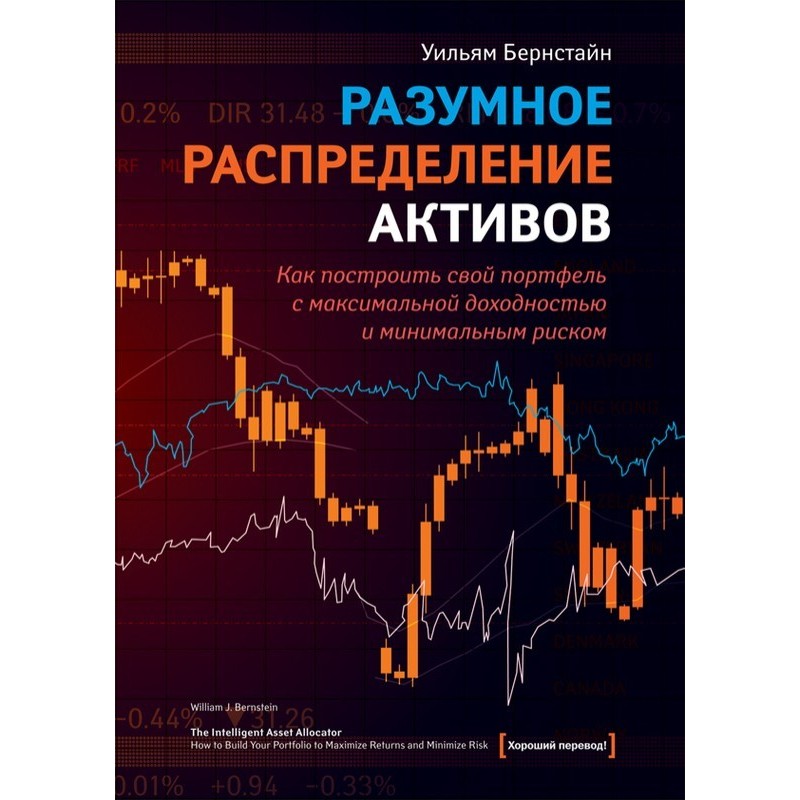Forex: From simple to complex
 Instant download
Instant download
after payment (24/7)
 Wide range of formats
Wide range of formats
(for all gadgets)
 Full book
Full book
(including for Apple and Android)
What the book is about: About the state and structure of the global foreign exchange market. A lot of space is occupied by a description of the organizational structures of the largest banks in the USA and Europe, whose actions directly affect the monetary policy of the market. Why the book is worth reading: – An ideal selection of tips, facts and examples for building your own trading strategy; – A modern approach to managing foreign exchange transactions, without looking back on traditional styles and outdated examples of great traders who remained great in the history of trading; - Accessibility of presentation for any kind of specialist due to the absence of "abstruse" and metaphorical statements; - Full correspondence of form and content: the topic "from simple to complex" is revealed as in historical plan, and in practical terms. For whom is this book: Addressed to economists, financiers, traders directly, as well as those who are interested in the organization of the banking systems of the largest countries in the world or the history of the formation of the world system of monetary relations. 5th edition. The concept of a distributed market. Liquidity. GMT time and local time of major financial centers. Market size and organizational structure. Market participants. Prerequisites for the possibility of predicting price behavior. Control over operations in the foreign exchange market using the example of FSA and KROUFR. Codes of conduct for market participants. Market makers. Designations of major currencies. Types of quotes. The procedure for calculating exchange rates. Spread. Buying price and selling price. Trading with fixed lots. Quotation systems. Making transactions. Margin trading or leverage. Currency position. Transactions with and without delivery. Price per item. Theoretical profitability. Valuation. Features of trading on the interbank foreign exchange market. Trades spot, tod, tom, forward. Forward points. The value of forward points. Swap transactions. Swap of currency positions. Transfer the position to the next day. Features of the transfer from Wednesday to Thursday. Orders.Arbitration. Information Systems. Reuters Dealing 2000/3000 system, EBS. Financial intermediaries in the Forex market. Graphic representation of prices. Supply and demand curves. Interest rates. State of the economy. Purchasing power parity. Balance of payments. Support and resistance levels. Interaction of price with level. Breakout criteria. Carrying out levels. Theory of Ch. Dow. Drawing trend lines. Market situations of interaction between price and trend lines. General overview. Trend reversal patterns, their properties and trading methods. Double top/bottom. Head - shoulders. Rhombus. Bowl (gravy boat). General overview. Equilateral triangle. Ascending triangle. Descending triangle. Expanding triangle. Flag. Wedge. Rectangle. Head - shoulders as a continuation of the trend. Simple MAs. MA crossing. Filters. Emissions trading. MA divergence. Exponentially smoothed MA. Linearly smoothed MA.Envelopes. Bollinger Bands.
Data sheet
- Name of the Author
- Игорь Морозов Владимирович
- Language
- Russian












